Some Things Last
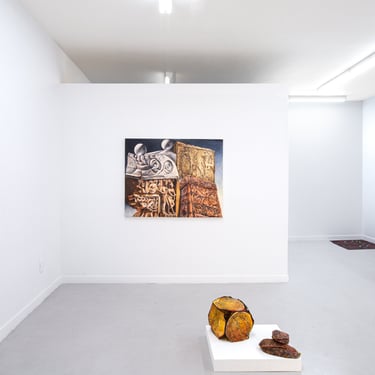
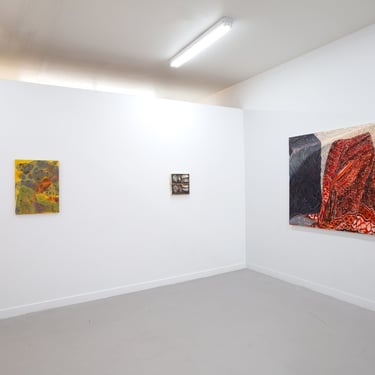
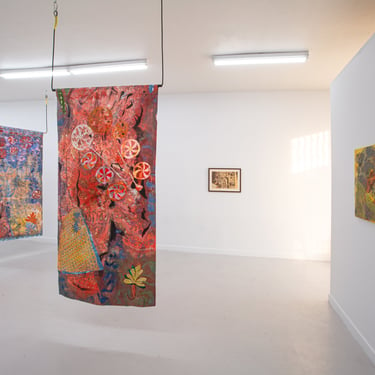
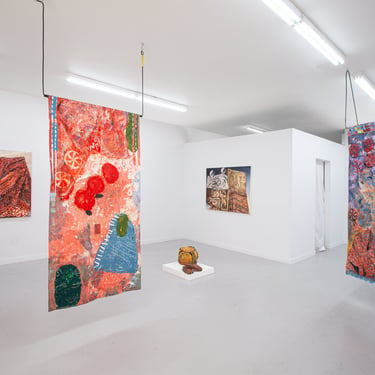
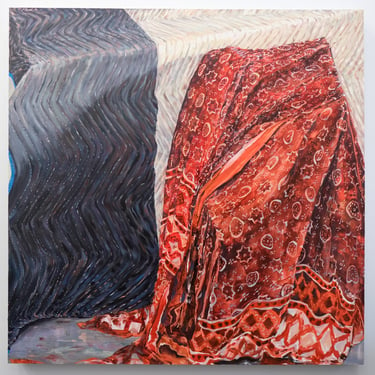
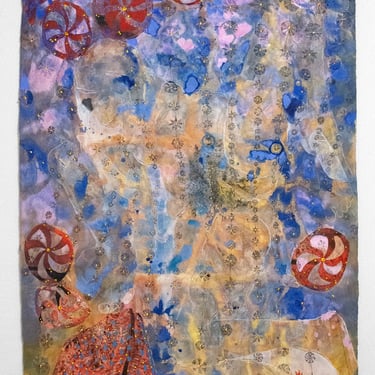
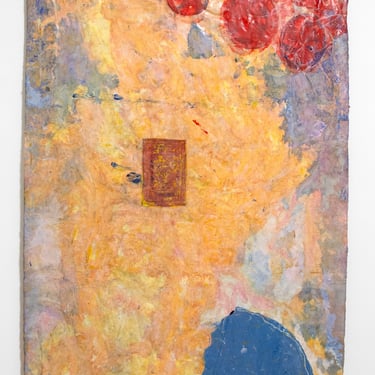
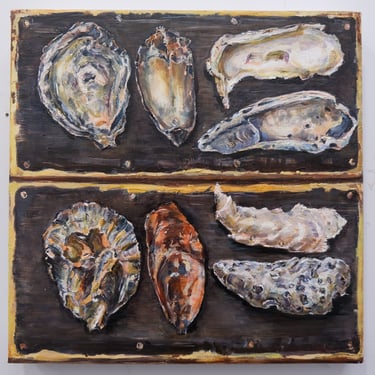
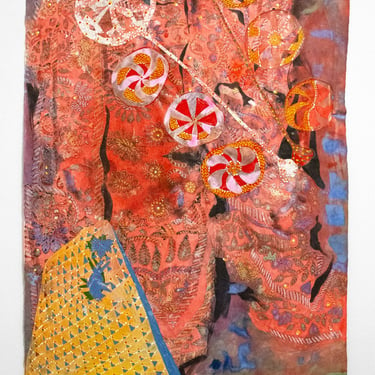
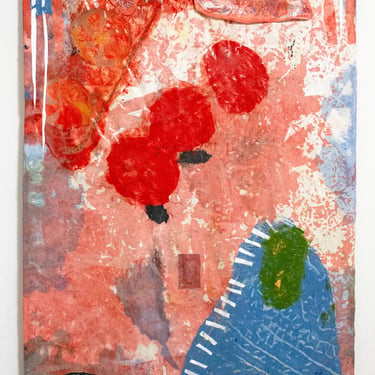
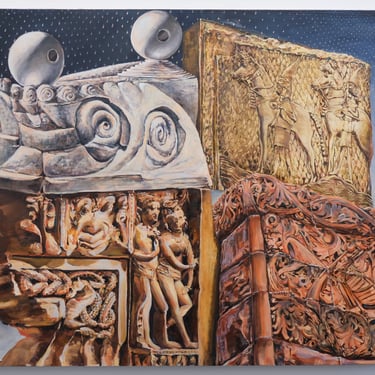
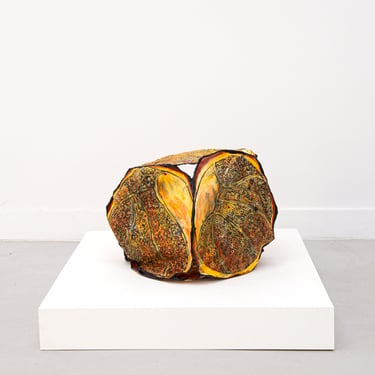
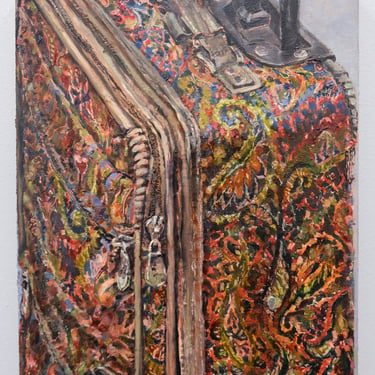
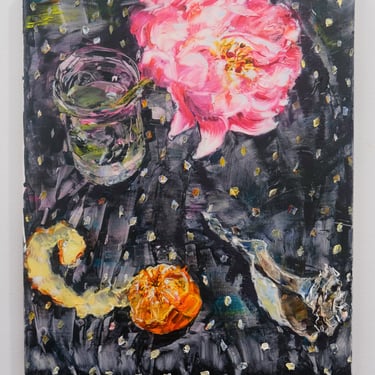
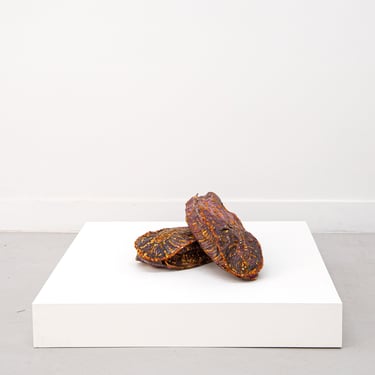
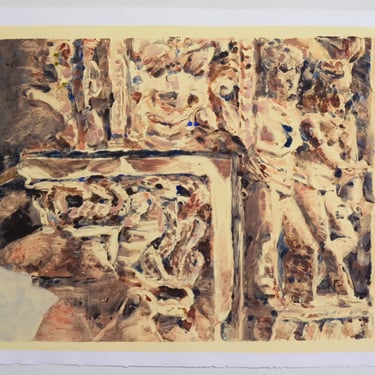
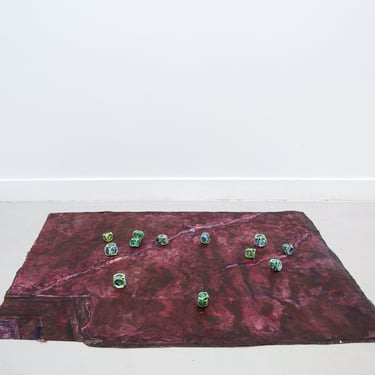
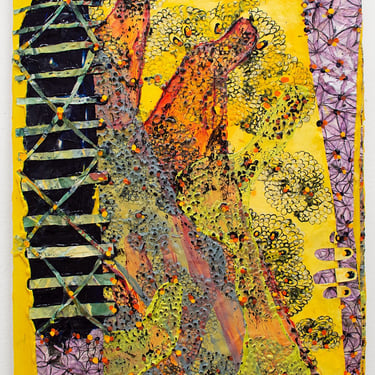
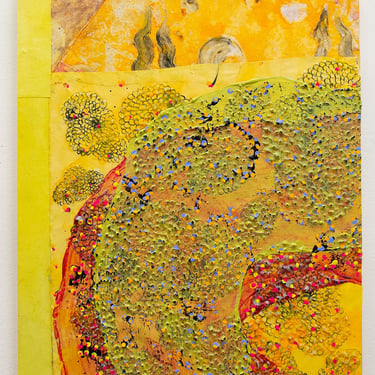
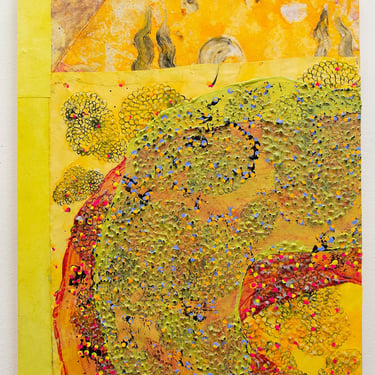
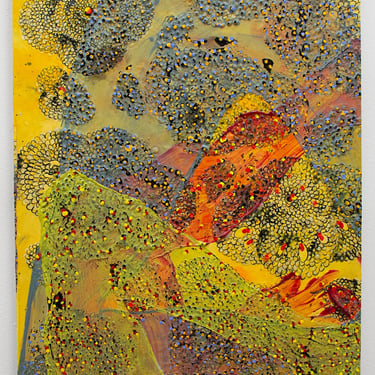
The shape of going and coming is a paisley, a flower, a print. It is a basketball bouncing, a moving blanket. You can come and go with your feet and with your mind, if you are lucky. Return to a sensation or a painting. Recognize your body lying down like a Courbet, your hand yet again tracing ancient stonework. Repeat the story of your family’s house as the structure of the house, organize the suitcase to shuttle the new memories clinging to old clothes back home or to a new home. Arrange these pieces on surfaces, don’t assume all of this movement is the meaning; or let them and their associations pierce space like a scent, like heat. Above all do not forget: some things last, but you cannot know which ones.
This exhibit accumulates some of these things, according to Meena Hasan’s and Aparna Sarkar’s artworks. Hasan and Sarkar share an attention to color and texture, as well as the desire to bring the markers of their histories onto the surface of the present with nuance. They broadly reference the formats and materials of South Asian diaspora, French Romanticism and Postimpressionism, and American modernism; with a contemporary eye toward the art object as presentation.
Sarkar’s paintings tend toward conceptual formalism mixed with the building of pattern through mark, using the logic of ordering to describe itself. Landmark I stages reference as grid, from Louise Bourgeois to Assyrian relief, to ancient Indian column carving, to the cornerstone of a building on Atlantic Avenue in Brooklyn. They are set against the stars, lest you forget this assemblage isn’t happening in real life. Delicate still lifes of flowers, oysters, textiles lean on juxtaposition as well, forcing a spatial comparison that takes immediate visual precedence over context, content, and its baggage. In Sarkar’s hands, this is a way of treating baggage itself as content, the literal paisley-ed handluggage of Carry On and standard issue moving blanket of Pile with Moving Blanket teach us to see all items as though they are in motion, unmoored except for a little while in painting. Diaspora is another way of abstracting, of removing context from the content of objects, upbringings, social life. Packing things is another way of making some things last.
Hasan’s hanging paintings are fully imbued with color, imagery and meanings until fully saturated, using strategies of translation and sublimation to disperse history and personal reflection through material. They are titled after kanthas, quilted cloths which in Bangladeshi tradition, are used as blankets, throws, and wrapping for household objects, and she treats them as though they are sieves catching components of the self, pattern, and history. You find glimpses of Hasan as The Origin Of the World as Isis (Travel Kantha); traditional patterning found in kanthas included in colonial collections like the Victoria and Albert Museum: these too, are moving blankets. Nakshi Kantha traces, in addition, part of a quilt owned by her family. While these play on the narrative and historical roles of various quilt traditions, creating the suggestion of story from overlay and combination, their materiality is more active, tenuous. You can see the translucent acrylic mediums that act as thread and backing, which allow these paintings to be lifted from traditional supports, and activates the surface as both site and structure. In paper replicas of shoes, familial flooring, and a basketball, painting surface is expanded into the world, with the sculptures fully occupying the emotional and psychic weight of these objects because they have been translated away from their traditional use and form.
Both artists are attuned to the transition of one mark or gesture to another, of composition as a way of holding things together; both use paint as technology to understand how meaning is produced, and where our associations of particular aesthetics falter. Paint can be a way to ask meaning to stop for a second so it can be located; paint can make a world from combinations that appear at first glance to have no relation.
This show borrows its title from a poem by Ahmad Almallah. Disaster haunts the poem softly, at the edges of the human attempt to continue to make meaning of our days. Even these early days of 2025 are rife with disasters, though with distinct harshness. I am finishing this writing from New York as Los Angeles burns around this show; it is impossible not to think about, impossible to write in, impossible to leave out. There’s a way that looking to assert meaning is another kind of disaster, an obscene imposition of sense atop emergency.
“Painting things” make sense, but not of the whole world. They are like the “funny little tricks” of the morning birds’ routines, that lead them toward the fissures in spaces that seem like they are closed, not because they are looking for that opening or any transcendence, but out of habit. From the obscurity of matters at hand, of not knowing how to make sums from what a person brings with them into each day, painting can layer and adjust the “knowledge of the hidden world.” It waits for us.
— Gaby Collins-Fernandez
Gaby Collins-Fernandez is an artist, writer and teacher living and working in New York City
Meena Hasan’s artworks navigate the politics and aesthetics of heritage by drawing from processes and forms sourced from her index of personal and historical textiles, patterns and decorations. She uses paint, inks and a variety of papers to develop textured and exuberant psychosomatic surfaces. She received her B.A. in Studio Art from Oberlin College in 2009 and her MFA in Painting & Printmaking from Yale School of Art in 2013, where she won the Carol Schlosberg Memorial Prize for Painting. She is currently an Associate Professor in Painting at RISD, Providence while living and maintaining her studio in New York City.
Aparna Sarkar is an oil painter living in Brooklyn, NY. She holds an MFA in Painting from the Rhode Island School of Design (2021) and a BA in Mathematics from Pomona College (2014). Her work deals in abstraction and pattern, often made from observation of Indian textiles and other objects. Her practice also encompasses drawing, printmaking, and ceramics. She is a member of the curatorial collective and Manhattan gallery, Below Grand.